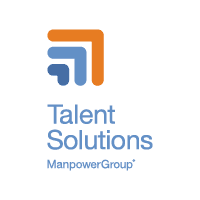Throughout history, humanity has navigated seismic shifts brought about by revolutionary advancements. From the agricultural revolution, which transitioned us from hunter-gatherers to settled farmers, to the industrial revolution that mechanised production and reshaped societies, each wave of innovation has tested our adaptability and resilience.
Today, we find ourselves on the brink of another transformative era – the artificial intelligence (AI) revolution. No longer a distant concept, AI is here, actively redefining the way we work, communicate and innovate. Much like the steam engine powered the industrial revolution, AI is now the catalyst for a new wave of exhilarating yet challenging change.
Our new report, Building a People-First Strategy for AI-Powered Workforce Productivity, takes a deep dive into the AI revolution, examining its profound impact on jobs, businesses and society. Powered by insights from the ManpowerGroup Employment Outlook Survey of over 40,000 employers across 42 countries, we’ve gathered critical data on the strategies and mindsets necessary to thrive in the AI era.
Riding the wave of change
In the fast-paced, ever-changing technological landscape of today, what once seemed like a distant whitecap now feels like a tidal wave growing larger every second. This wave is set to crash onto the shores of your industry, transforming everything in its path.
Our research reveals that nearly half (48%) of companies have already adopted AI technologies, a significant increase from 35% just a year ago. This rapid uptake spans industries and regions, from healthcare in North America to manufacturing in Asia.
Yet, the full scale of this revolution is still unfolding. By 2027, a staggering 81% of employers worldwide are expected to have AI tools deeply integrated into their operations. This projection highlights the urgent need for businesses and individuals to prepare for a future where AI is not merely a tool but a core component of the work ecosystem.
Debunking myths: AI’s real impact on jobs
AI and jobs – a topic rife with fear and uncertainty. Will robots replace humans? Will millions be jobless? It’s time to debunk these myths.
Our research paints a different picture. Over half of employers (55%) expect AI and machine-learning to create more jobs in the coming years. Instead of replacing us, AI might offer opportunities in roles we haven’t yet imagined. And on the flip side, only about a quarter of employers (24%) believe AI won’t have any impact on job growth, and an even smaller fraction (18%) anticipate staff reductions.
AI is like a pebble tossed into a pond, creating ripples that touch every aspect of the workplace. While it won’t be smooth sailing for everyone – some roles will evolve or even vanish – there’s a silver lining. That’s where upskilling and reskilling will take on an even more prominent role. AI is expected to be an ally rather than an adversary, with seven out of ten employers anticipating the technology will aid in their upskilling and reskilling efforts. By investing in training and development, we can equip our people to adapt and thrive in this new era.
Overcoming hurdles to adoption
Let’s face it – bringing AI into the fold isn’t always a walk in the park. Our survey shows a substantial 72% of employers believe AI will significantly boost their business. But there are significant challenges that organisations face when integrating these technologies into their workflows.
First, the cost. One-third of employers (33%) we surveyed cited high costs as a major obstacle to AI adoption. Implementing AI can indeed be a significant investment, particularly for smaller businesses. However, the long-term benefits of AI frequently outweigh these initial costs.
Next, privacy and regulations. With data constantly in motion, 31% of employers are concerned about security and compliance. Equally as challenging is the skills gap as nearly one-third of employers (31%) have reported a lack of employees with necessary AI skills as a major barrier to adoption. Again, upskilling and reskilling are the keys here.
Unlocking AI’s potential: Five strategies for success
AI adoption isn’t just about integrating cutting-edge technology; it’s about fostering a culture where your workforce thrives alongside it. Here are five strategies that can help:
Upskill and reskill workforce: Scale upskilling and reskilling initiatives to equip employees with the necessary skills to work alongside AI-based technologies.
Redesign jobs based on human talent: Use AI to enhance human capabilities in job redesign efforts.
Remove barriers: Overcome challenges like high costs, privacy concerns and lack of AI skills by establishing AI governance policies and investing in workforce development.
Foster optimism across all levels: Engage employees at all levels to create a positive attitude and buy-in for AI-based technologies.
Ensure ethical practices: Set up an AI council to discuss the tech’s usage and develop a policy aligned with regulations.
Putting people first
Amidst the AI excitement, it’s crucial to remember the heart of your organisation: your people. After all, they’re the ones who will be working alongside these intelligent systems, day in and day out.
Interestingly, AI optimism varies quite a bit depending on where you sit in the organisational hierarchy. According to the research, a whopping 69% of senior leaders are gung-ho about AI, while only 57% of frontline workers share that same level of enthusiasm. It’s understandable – leaders focus on strategic benefits, while those on the ground worry about day-to-day impacts.
But here’s the thing – if you want your AI adoption journey to be a success, you need to bring everyone along for the ride. That means involving and supporting employees at all levels, from the C-suite to the factory floor. This involves more than just training; it’s about actively engaging your workforce in the process, soliciting their input and feedback and addressing their concerns head-on.
As Jonas Prising, ManpowerGroup Chairman & CEO, puts it: “Now is the time to prioritise upskilling, reskilling and job redesign to build a brighter future of work.” In other words, if you want to create a future where humans and machines can work together in harmony, you need to invest in your people. That means providing them with the skills and support they need to thrive in an AI-powered world.
But it’s not just about individual employees – it’s about creating a culture of innovation and continuous learning. When your workforce feels valued, supported and empowered to experiment with new technologies, amazing things happen. They’ll be more likely to embrace AI as a tool to augment their capabilities, rather than a threat to their livelihoods.
Embracing the future
The AI era is here, bringing a world of opportunities for organisations ready to embrace change. By putting people first and implementing the strategies outlined in this report, you’ll be well-positioned to harness the power of AI and create a future-ready workforce.
The journey ahead is an exciting one, filled with the potential for increased productivity, more meaningful work and enhanced human-machine collaboration. As AI continues to evolve and integrate into our workplaces, we’ll see a shift towards a more innovative, creative and adaptable workforce – one that is empowered to achieve remarkable things.
Download your copy of Building a People-First Strategy for AI-Powered Workforce Productivity now and start unlocking the full potential of AI for your organisation.


